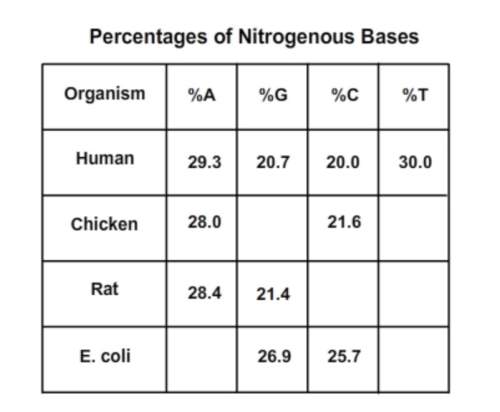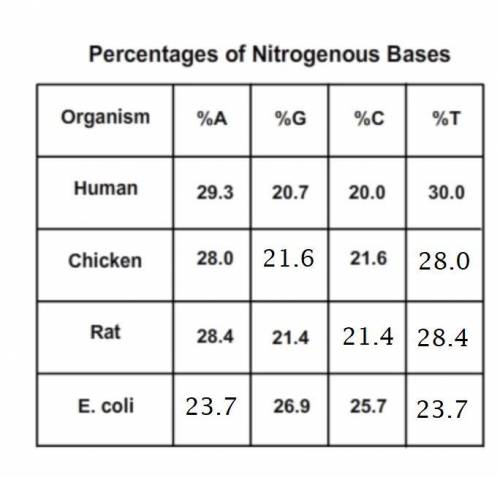
Biology, 29.06.2019 00:00 mikelback419
Using chargaff’s rules, what are the most likely percentage of g and t in the chicken dna sample. a. guanine 22%, thymine 16% b. guanine 22%, thymine 28.4% c. guanine 36%, thymine 21% d. guanine 56%, thymine 13.8%


Answers: 1


Another question on Biology

Biology, 22.06.2019 01:30
Based on the law of dominance, we would expect percent of the offspring from this cross to have large teeth.
Answers: 2


Biology, 22.06.2019 04:00
Select the true statements about eubacteria. most live as decomposers and heterotrophs. most only thrive in a narrow range of environments. certain eubacteria are responsible for food poisoning. eubacteria thrive in extreme environments.
Answers: 3

Biology, 22.06.2019 09:10
Refer to this portion of a dichotomous key for fish identification to answer the question. 1. (a) has a single dorsal fin ® 5 (b) has a double dorsal fin ® 2 2. (a) one fin is spiny, the other is smooth ® 3 (b) one fin is not spiny or smooth ® 4 5. (a) has small fin on back near tail ® 6 (b) has no fin on back near tail ® 7 6. (a) has barbs near the mouth ® catfish (b) does not have barbs near the mouth ® 10 7. (a) tail is asymmetrical ® 8 (b) tail is symmetrical ® 9 10. (a) scales are small ® trout (b) scales are large ® whitefish what is the next step to complete to identify a fish that has a single dorsal fin, no fin on the back near the tail, and no barbs near the mouth? step 2 step 5 step 7 step 10
Answers: 2
You know the right answer?
Using chargaff’s rules, what are the most likely percentage of g and t in the chicken dna sample. a....
Questions














Computers and Technology, 25.02.2020 19:21


English, 25.02.2020 19:21







